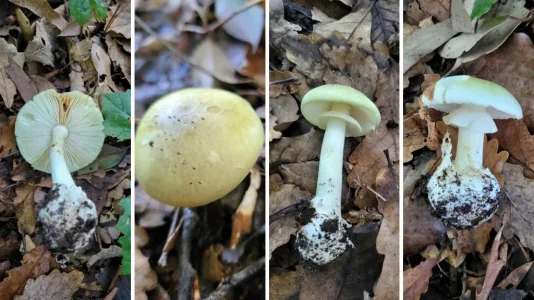Here are today's updates from the Herald Sun
2 hours ago
'Fascinated by the world of fungi': Poisons specialist takes the stand
Retired pharmacist Christine McKenzie has been called to give evidence after a short delay.
She said she worked for 17 years as a poisons information specialist at the Victorian Poisons Information Centre before retiring in 2023.
Ms McKenzie told the court she would answer calls from members of the public after the potential ingestion of fungi and give them advice.
But she said she “wanted to know more” about mushrooms beyond the knowledge required for her work, describing them as “beautiful”.
“I was fascinated by the world of fungi,” she said.
“I did a lot more extra reading myself and went on some forays with some experts … bushwalking because it became a bit of a personal interest.”
She added: “A lovely way to go for a bushwalk is with an expert.”
Ms McKenzie told the court she wanted to be able to identify “relatively quickly and easily” the most toxic fungi, including death cap mushrooms.
But she noted she was not a forager.
“I don’t go for a walk to find them to eat.”
2 hours ago
Highlight
Death caps spotted in another area near Leongatha: Witness
Ms McKenzie told the court she had an account on the citizen science website iNaturalist where members of the public post sightings of plants, animals and fungi.
She confirmed she had contributed 70 posts, mainly identifying fungi.
The court heard she had made two observations of death cap mushrooms, including in Loch, near Leongatha, on April 18, 2023.
Ms McKenzie said she was on a walk with her grandson and the family dog when she observed the death caps under an oak tree near the recreation oval.
“I took photos first and then … we had a dog poo bag with us, so I removed all the death cap mushrooms I could find,” she said.
“Because of my training, I’m well aware of the toxicity of amanita phalloides (death cap mushrooms) and it was a popular area for people to take their dogs.”
She added that local children also attend “bush kinder” near the oval.
The court heard Ms McKenzie was concerned more death caps could grow in the area over the “subsequent weeks”.
The jury is now being shown a screenshot of her iNaturalist post.
When shown one of the photos she took on April 18, Ms McKenzie remarked: “If I say so myself, that’s quite a nice image of a mushroom”, prompting laughs from the courtroom.
She described the death cap as having a white cap with a yellow tinge and white gills.
She told the court the remnants of the veil could be seen in one of the photos.
The court heard iNaturalist allows users to zoom in on a map to see the exact location where a sighting has been made.
In its opening address to the jury, the prosecution alleged that phone data suggests Erin travelled to the Loch area 10 days later on April 28.


2 hours ago
Witness 'in the dark' on wider fungi kingdom
Under cross-examination by defence barrister Sophie Stafford, Ms McKenzie agreed she looks out for toxic mushrooms because she does not want anyone to mistakenly forage and ingest them.
“I often suspected there would be death cap mushrooms under the oak tree near the oval,” she said, but confirmed that she had never seen them growing in that area before.
The court heard she was in Loch to visit her daughter in April 2023 and did not return to the tree to see whether more death caps had grown.
Ms McKenzie told the court she would consider herself a “novice” when it came to identifying non-toxic mushrooms and uses iNaturalist as an identification tool.
“The toxic mushrooms that I’m aware of in my work, I feel much more confident about,” she said.
“As far as the wider fungi kingdom, I’m as much in the dark as anybody else.”
She has completed her evidence and left the witness box.
1 hours ago
Highlight
Digital forensic expert takes the stand
Digital forensics expert Dr Matthew Sorell has entered the witness box.
The court heard he has experience in more than 400 criminal matters and one of his areas of expertise was mobile phone network data.
He has started giving the jurors a lesson on base stations or the infrastructure that provides a radio connection between a mobile phone and the network through antennas.
He said base stations could be located on a telecommunications tower, a tall commercial building, a grain silo or even a large water tank.
“In an urban environment, these are spread out throughout the suburbs,” he said.
“In country areas, there are typically 1-2 base stations that cover a local town and then there will be base stations designed to cover … areas between towns.
“We end up with a relatively large number of base stations, placed carefully throughout that environment.”
The jury has been shown a map of several base stations in the Gippsland area, depicted by circles.
A base station can be seen at Korumburra, Loch South, Arawata, Kardella and Holmes Hill.
Dr Sorell is explaining that the antennas of a base station will point in different directions to provide coverage on all sides.
The court heard the circles did not indicate the area of coverage.
“In a country area, base stations are deliberately placed to provide coverage into a town or they’re placed at key locations … like major roads … or hilltops for the purpose of providing wide area coverage,” he said.
Dr Sorell will return to the witness box at 2.15pm.



